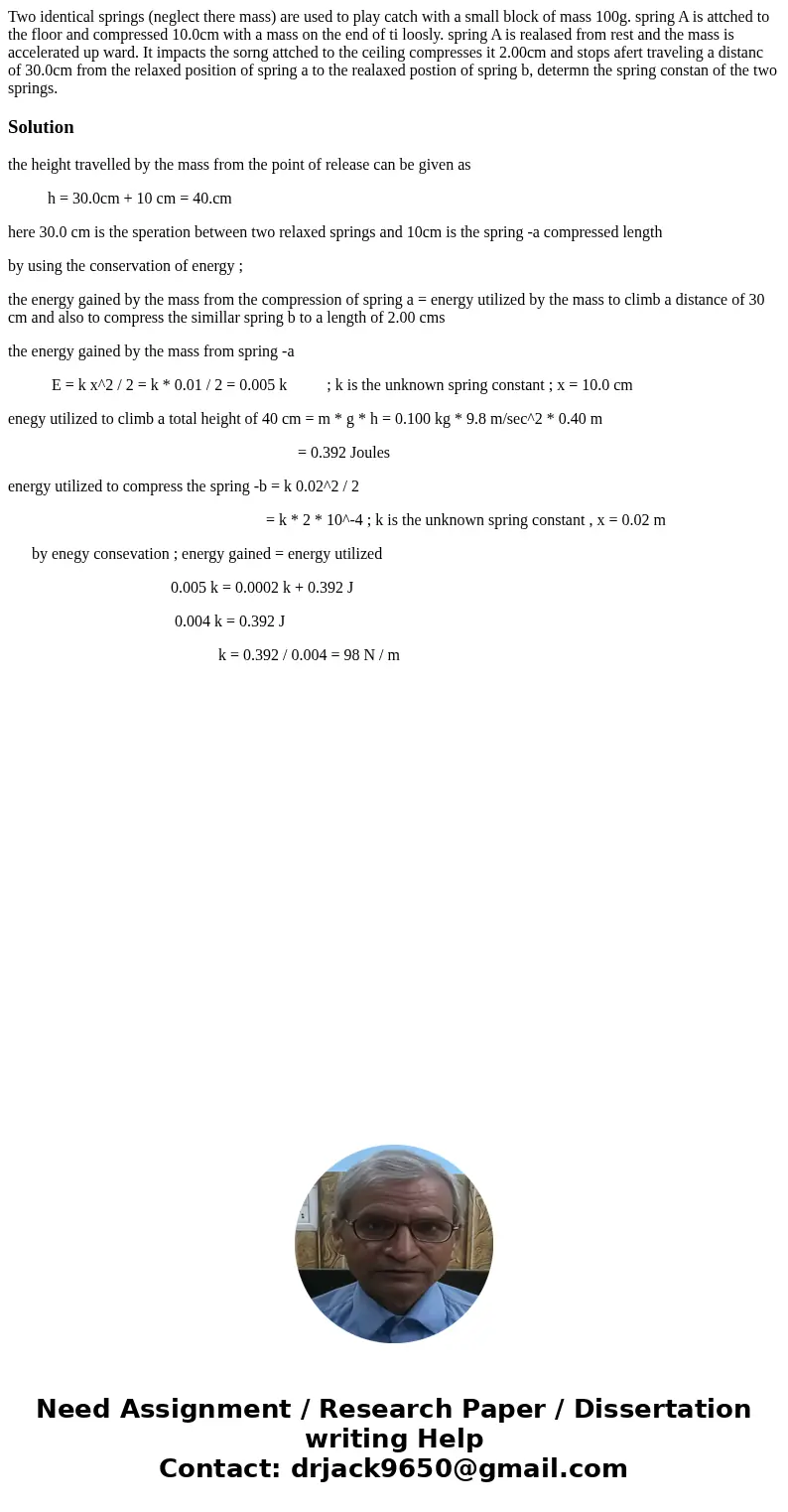Two identical springs neglect there mass are used to play ca
Two identical springs (neglect there mass) are used to play catch with a small block of mass 100g. spring A is attched to the floor and compressed 10.0cm with a mass on the end of ti loosly. spring A is realased from rest and the mass is accelerated up ward. It impacts the sorng attched to the ceiling compresses it 2.00cm and stops afert traveling a distanc of 30.0cm from the relaxed position of spring a to the realaxed postion of spring b, determn the spring constan of the two springs.
Solution
the height travelled by the mass from the point of release can be given as
h = 30.0cm + 10 cm = 40.cm
here 30.0 cm is the speration between two relaxed springs and 10cm is the spring -a compressed length
by using the conservation of energy ;
the energy gained by the mass from the compression of spring a = energy utilized by the mass to climb a distance of 30 cm and also to compress the simillar spring b to a length of 2.00 cms
the energy gained by the mass from spring -a
E = k x^2 / 2 = k * 0.01 / 2 = 0.005 k ; k is the unknown spring constant ; x = 10.0 cm
enegy utilized to climb a total height of 40 cm = m * g * h = 0.100 kg * 9.8 m/sec^2 * 0.40 m
= 0.392 Joules
energy utilized to compress the spring -b = k 0.02^2 / 2
= k * 2 * 10^-4 ; k is the unknown spring constant , x = 0.02 m
by enegy consevation ; energy gained = energy utilized
0.005 k = 0.0002 k + 0.392 J
0.004 k = 0.392 J
k = 0.392 / 0.004 = 98 N / m

 Homework Sourse
Homework Sourse